Books
Books
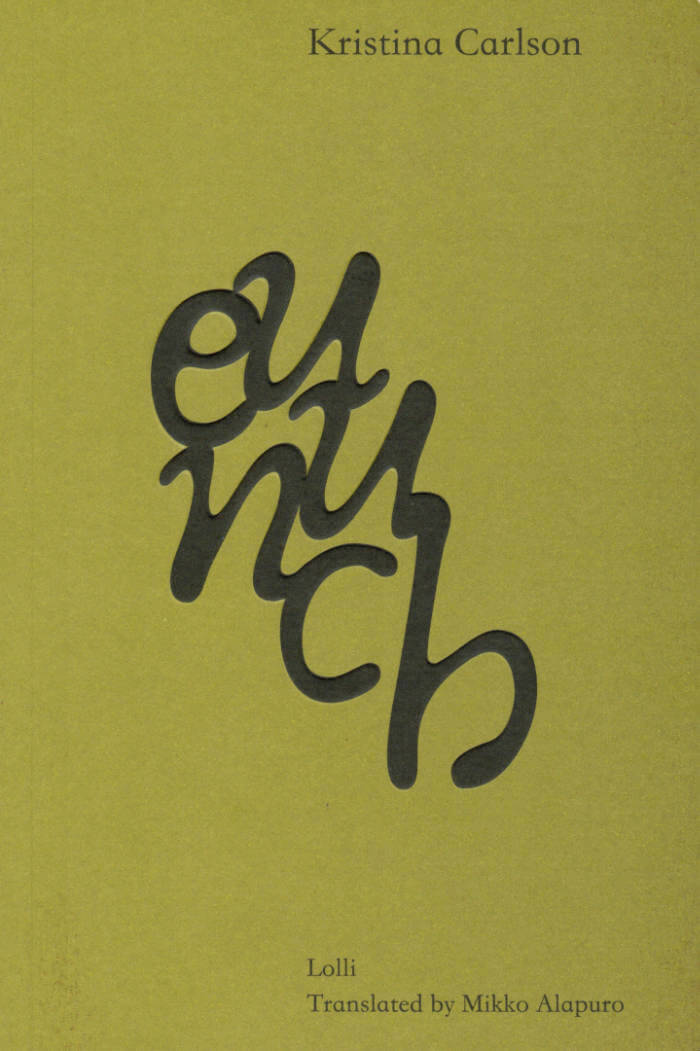
Eunuch
An ageing eunuch, named Wang Wei after the great poet, looks back on his life at the court of the Song dynasty in 12th-century China
Wang Wei has always chosen his words carefully. His unobtrusive presence has seen him through the reign of five emperors, but now, as his own time is running out, he immerses himself in an unbridled account of a life confined at court. From the early separation from his parents, sisters, and brother – who did not survive the operation into a eunuch – to the power struggles he has witnessed and endured, Wang Wei examines human relationships with precision and a catching sense of wonder. While rumours are weapons, it is love and its various forms of expression that most fascinate Wang Wei.
Reaching into a secret and secluded world, Carlson's vivid prose is as delicate as it is enigmatic. A meditation on power and exclusion, love and loneliness, gender and identity, ageing and transformation, Eunuch is a compact masterpiece.
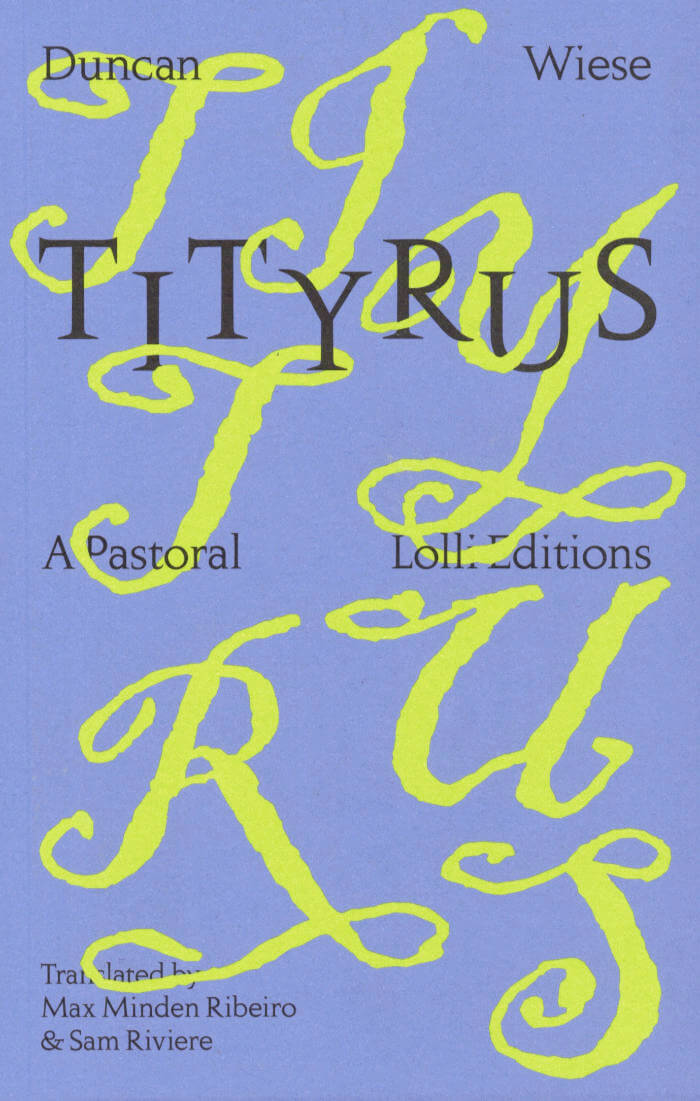
Tityrus
Duncan Wiese updates the pastoral for the 21st century. In Tityrus, the countryside offers a less than ideal lifestyle for a young shepherd
The ideals of simple country living have captivated poets for a crow’s age. But in the countryside that Tityrus knows, the beech trees tower like skyscrapers, mice wrestle each other, and the nearby island is infected by swarms of gulls. The forest is a source of energy, but also the home of a behemoth transformer substation and where a little boy has drowned. The shepherds are prescribed Ritalin, slip in the mud, cry without knowing why, and sustain themselves on mini pizza rolls.
Wiese’s poetry is as hilarious as it is gentle, moving gracefully between the everyday and the profound. Building with the narrative quality of a novel, Tityrus is both an elegy to a natural world that has long been overindustrialised, and a love letter to all that remains.

Strega
Powerfully inventive and atmospheric, Strega is a modern gothic story of nine young women on the cusp of inheriting society’s submission to violence, and the age-long myths that uphold it
With little boxes of liquorice, hairbands, and notebooks in her bag, Rafa arrives at the remote Alpine town of Strega to work at the grand Olympic Hotel. There, she and eight other girls receive the stiff uniforms of seasonal workers and are taught to iron, cook, and make the beds by austere matrons. In spare moments between tasks, the girls start to enjoy each other’s company as they pick herbs in the garden, read in the library, and take in the scenery. But when the hotel suddenly fills with people for a raucous party, one of the girls disappears. What follows are deeper revelations about the myths young women are told, what they are raised to expect from the world, the violence they are made to endure, and, ultimately, the question of whether a gentler, more beautiful life is possible.
A monument to long-dead maids and their shrouded knowledge, Johanne Lykke Holm’s luminescent and jagged prose, delivered in Saskia Vogel’s incisive translation, resonates like a spell that keeps exerting its powers long after reading.

Love and Money, Sex and Death: A Memoir
After a successful career, a twenty-year marriage, and two kids, McKenzie Wark has an acute midlife crisis: coming out as a trans woman. Changing both social role and bodily form recasts her relation to the world. Transition changes what, and how, she remembers. She makes fresh sense of her past and of history by writing to key figures in her life about the big themes that haunt us all—love and money, sex and death.
In letters to her childhood self, her mother, sister, and past lovers, she writes a backstory that enables her to live in the present. The letters expand to address trans sisters lost and found, as well as Cybele, ancient goddess of trans women. She engages with the political, the aesthetic, and the numinous dimensions of trans life and how they refract her sense of who she is, who she has been, who she can still become. She confronts difficult memories that connect her mother’s early death to her compulsion to write, her communist convictions, her coming to New York, the bittersweet reality of her late transition, and the joy to be found in Brooklyn’s trans and raver communities.

Runes and Chords
Ephemeral and anarchic, Runes and Chords is the first collection of artwork by famed poet, critic and artist Alice Notley. These sketches, drawn on an iPad and first serialized on Notley’s Twitter feed, are a fascinating window into an evolving practice, collages of flowers and poetry, the white space of digital creation and overlaid colors erupting from the page.
They defy containment and category, much like their creator—each a second in a day, an afternoon or evening in Paris, a thought so transient it can only exist in the medium of social media. With this collection, one of America’s most influential living poets and artists continues to prove her worthiness of that title.

Métaphoriques Cannibales
Métaphoriques Cannibales est un recueil transdisciplinaire, où le cannibalisme est pris comme métaphore, comme un concept ouvert aux analogies, comme anthropopoiésis et boîte noire, et comme fait social total.
Peuplent cet endroit des individus qui s’abreuvent de symboles, d’imaginaires, d’occulte, d’intime et ne craignent pas d’en recracher des images et idées d’une extrême violence, tout en constituant paradoxalement l’univers de leur production comme “safe space”.
Le cannibale est une spécialité belge, composée d’un toast recouvert de filet américain (une variante belge du steak tartare).
Transgressif et provocant, c’est ici un paroxysme de l’altérité et fantasme de l’Autre, qui permet par reflet de nous contempler nous-même.
La vie n’a de saveur que pour devenir viande.
La transgression, c’est aussi aller plus loin. Oser aller plus loin. Plus loin que les normes communément admises qui sont toutes relatives et violentes.
SUBSTANCE MOLLE ET SANGUINE
Nous cherchons des outils spéculatifs pour pænser notre monde.STIMULI VISUELS HOMOGÉNÉISÉS PAR LE ROUGE
C’est d’un brouillard polysémique empli de chimères, d’un tabou lardé de malaise et d’angoisse, bien au chaud dans un ventre plein de plasma, que ɴon-ᴀ émet ce recueil transdisciplinaire.
Dans la large brèche que nous propose l’ouverture de notre thématique, s’engouffre une multitude d’approches : de la chansonnette, au récit spéculatif, de la définition critique, à la BD vorarephile, du reportage photo, à la poésie expérimentale, de la théorie d’écologie spéculatif, à la performance eroticocculte.
Explorons les obscures profondeurs de nos éthiques pour y trouver les fondations de nos ontologies... se mordre d’une balle dans le pied.
Contributeur·rice·x·s
aariel136, Maurane-Amel Arbouz, Nina Bigot,Mathilde Block, Juliano Caldeira, Rémi Calmont, Rouge Cendre, Chloé Clemen, Sam Ectoplasm, Robin Faymonville, Gabriel René Franjou, Tristan Gac, Léo Gillet, Charlotte Guerlus, Théophile Gürtin, KarenDK, Olga Mathey, Louise Mervelet, Jean-Baptiste Molina, Hélène Alix Mourrier, Carole Mousset, Lucy Ozon, Angel Raymond, Andres Komatsu & Camila Roriz, Paradoc sale, Manon Schaefle, Yan Tomaszewski, Tom Valckenaere, Chloé Viton, xX-Sukuba-Xx, Zelig, Janna Zhiri
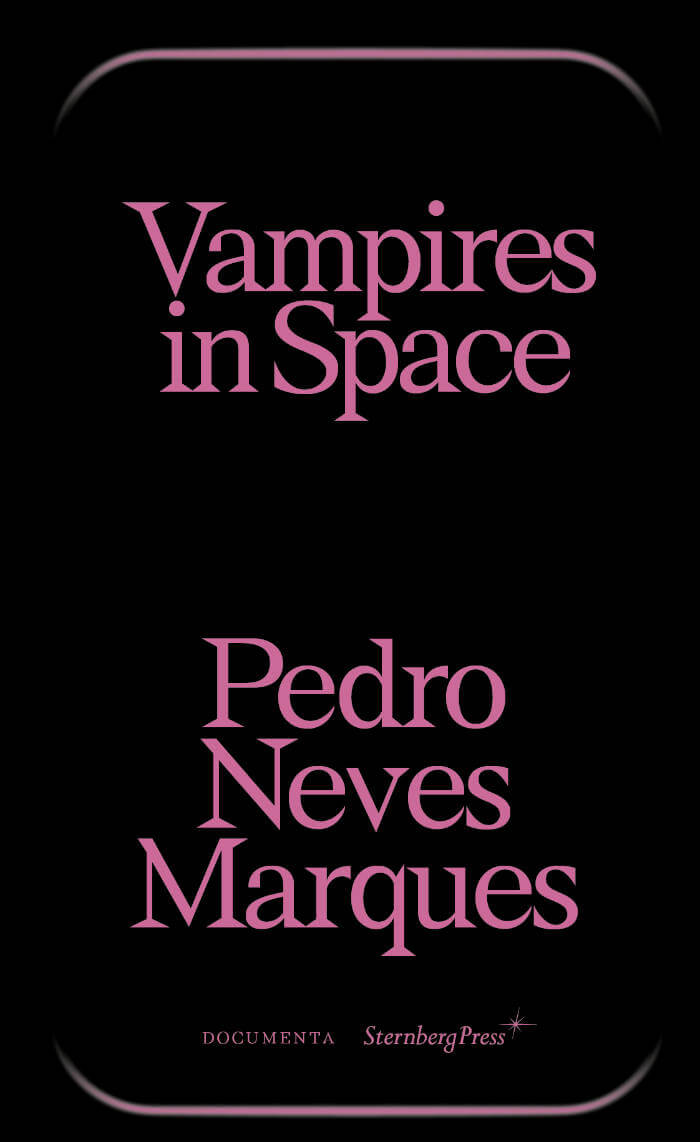
Vampires in Space
Exhibition catalogue of filmmaker, visual artist, and writer Pedro Neves Marques's solo project "Vampires in Space" at the Portuguese Pavilion, 59th International Art Exhibition – La Biennale di Venezia 2022.
"In space it's always night." A family of vampires travels through space, carrying life to a faraway planet. Alone, they recall their past, offering an open-ended narrative about the role of fiction in our lives, with a special care for transgender experiences.
This book includes an interview, film scripts and poetry by Neves Marques, curatorial texts by João Mourão, Luís Silva, alongside visual documentation and other contributions by Manuela Moscoso and Filipa Ramos.
The work of Pedro Neves Marques (born 1984 in Lisbon, Portugal) combines anthropological research, cinema, publishing, poetic and fictional writing. Their hybrid aesthetic, that blends science fiction and documentary realism is influenced by the history of feminist and queer sciences, and projects us into futures that question the control of our bodies, our desires and the world around us beyond the register of dystopia. In doing so, they explore how we might transform our imaginaries of gender, new technologies, ecology and postcolonial issues.

Rise and Fall of the Middlemen
A visual and poetic investigation of the enigmatic figure of the "Middleman", combining short punchlines and full-page illustrations, which are wryly reminiscent of Kafka's fictional world. The publication comes with a cardboard puppet, to be screwed and assembled.
Who is the Middleman? A viewer? An author who mediates between the world of ideas and the material world by creating drawings, sculptures, and texts? A simplified and symbolic puppet that can be moved by various forces?
In his latest book, artist Honza Zamojski makes an illustrative and poetic attempt to describe the Middlemen, their everyday life, and the realities that surround them. The book's short punchlines mark the rhythm of the Middelmen's life and their movements in the illustrations, which are wryly reminiscent of Kafka's fictional world.
Produced by the International Centre of Graphic Arts (MGLC) in Ljubljana and realized on the occasion of the exhibition Middleman in 2023, the publication comes with a Middleman cardboard puppet, literally the "hero taken from the book and put aside," a playful object to be screwed together, assembled, and dealt with, sometimes feeling a bit guilty.
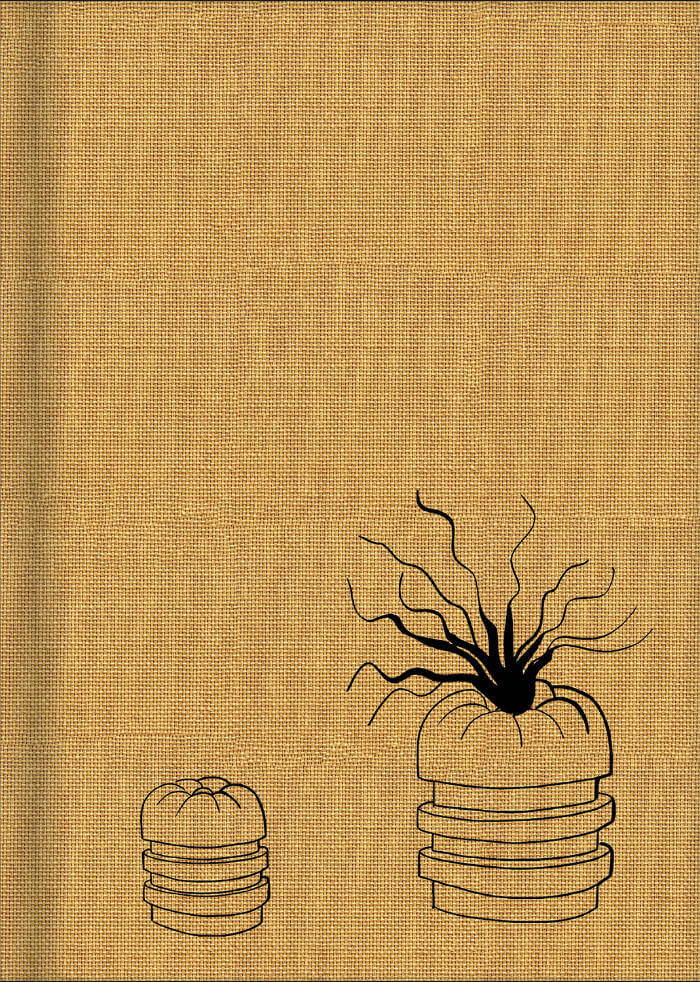
Elika Hedayat
First monograph of the Franco-Iranian artist.
This monographic catalogue looks back over the first 15 years of work by Iranian artist Elika Hedayat through more than 110 reproductions. Two of these are on a 1:1 scale, and a detailed set offers a comparison of the dimensions of the works in relation to each other.
Françoise Docquiert introduces the issues at stake in her practice with an essay, complemented by an interview with Joana P.R. Neves.
"Elika is a Parisian-Iranian artist. This cultural blend is slightly ironic though very significant, as it nourishes her artistic work and practice. Inspired by her childhood, her life, and the violence in her native country, she makes films, videos, and drawings always filled with beauty, scathing humour and cruelty." - Annette Messager
Born 1979 in Tehran, Elika Hedayat lives and works between Paris and Tehran. Arriving in France in 2004, she was admitted to the École Nationale Supérieure des Beaux-Arts in Paris in Annette Messager's studio, from wich she graduated with the Jury's congratulations in 2008.
For her works, Elika Hedyat often uses testimonies and experimental documentaries stage in a dreamlike and imaginary universe. Her stories are contemporary and her characters are real. All of her works revisits historical references, transferring them to the field of personnal experience, mainly using the various possibilities of her repertoire as a narrative document and memory retrieval tool. Reality, memory and imagination come together in a personal story under different forms : drawing, video, documentary, painting and performance.
Text by Françoise Docquiert.
Interview with Elika Hedayat by Joana P. R. Neves.
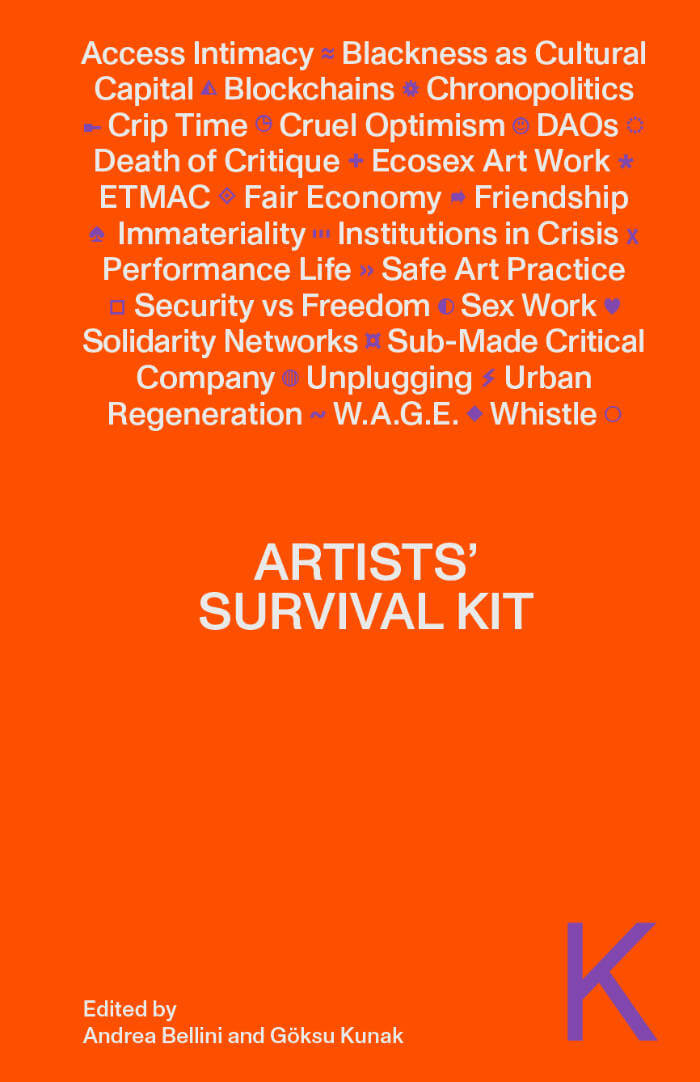
Artists' Survival Kit
A collection of essays and a critical attempt to rethink and improve the relationship between artists and art institutions and to give visibility to the precarious, complex, and very often existential reality of the art workers.
"Beneath the glamorous surface of the art world—the openings and dinner parties, the record-breaking auction prices, the media attention—lies a reality that is precarious, complex, and very often existential: only a tiny minority of artists support themselves with their work and fewer still manage to do so throughout their lives. This book tells those other stories, for example of artistic practices grounded in performance, research, and political activism. These practices are not necessarily oriented toward producing marketable objects. Thousands of artists around the world, at all latitudes, struggle every day under precarious work conditions, in the absence of shared rules, and with a debilitating sense of insecurity caused not only by the threat of global pandemics but also by war and political oppression, resurgent nuclear threat, competition for dwindling resources, and perhaps most pressing of all, the climate crisis.The economic challenge of supporting oneself as an artist immediately turns into an ethical one." — Andrea Bellini

Silent Whale Letters – A Long-Distance Correspondence, on All Frequencies
Ella Finer, Vibeke Mascini and 1 more
An experiment in listening to frequencies beyond human sensorial range, Silent Whale Letters is a long-distance correspondence intimately attuned to the infravoice of a blue whale, a document held silent in the sound archive, and other so-called "silent" subjects.
As part of an ongoing collaboration between Ella Finer and Vibeke Mascini the letters consider how the silent document shifts the logic of the archive, figuring listening as a practice of preservation.
As the letters attune to the ocean loud with communications across time and space, the authors write about the movement of matter, of energies, wavelengths, currents and how the ocean preserves as it disperses what it carries. How does working with what we cannot see, or even hear within range, shift the parameters of attention? How does the energetic archival space of the ocean agitate and disrupt claims to knowledge, history, and power?
Moving through three years of call and response the book unfolds through "a joint meditation on the transformative potential of a note, a voice, carried from saltwater into the archive" (Rebecca Giggs).
They chart a process that is equally conceptual and intimate, theoretical and deeply personal, moving through discussions of (amniotic) undercurrents, call-and-response mechanisms, energetic wavelengths, oceanic and archival memory, mysterious scales, and the watery acoustic commons.
Edited by Kate Briggs.
Contributions by Kate Briggs and Emma McCormick Goodhart.
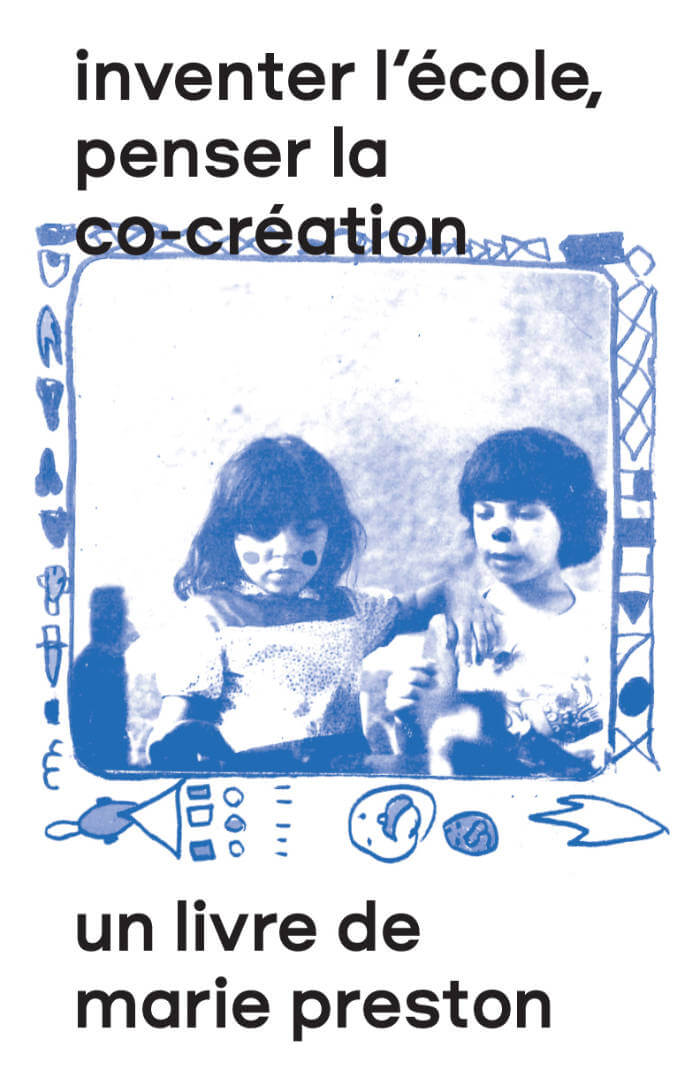
Inventer l'école, penser la co-création
A publication by artist and teacher-researcher Marie Preston on the alternative pedagogies developed in France during the 1970s-1990s in "open" schools working on the question of the relationship between co-creation and co-education.
The teaching teams at the heart of this book were convinced that, in order to break social reproduction, the school system was in dire need of transformation and they did it! The experiences discussed in this book constitute a truly fertile ground in terms of educational, relational and institutional inventions, and we have much to learn from them today. This is particularly true of cooperative and co-creative artistic practices which convey a true desire for and ways to implement social transformation, joint management, the emergence of collective creation and commons.
The work is built up around a back and forth between interviews and accounts from the participants of this story and contextual and analytical elements opening on co-creative artistic practices.
This book gathers an interview with Jean Foucambert, a discussion with Rolande and Raymond Millot (École Vitruve, Paris and La Villeneuve neighbourhood, Grenoble) and an unpublished text by André Virengue who was the headteacher of the Jacques-Prévert school in Villeneuve d'Ascq for over 20 years. A significant part of this work is dedicated to iconography, a crucial component of research as it enables the discovery of students' realisations as well as the publishing of school newspapers and other print works.

Modernism/Murderism – The Modern Art Debate in Kumar
Jyoti Bhatt Pherozeshah, Rustomji Mehta
Modernism/Murderism brings together, for the first time in English, a forgotten debate on Modern Art that took place in the pages of India's Gujarati-language literary periodical Kumar between 1959 and 1964.
Published across various issues, the debate brings into conversation Pherozeshah Rustomji Mehta, a writer and art connoisseur from Karachi, and Jyoti Bhatt, a young artist who had just begun teaching at the Faculty of Fine Arts, MSU Baroda. While Mehta chose to defend what he believed were the timeless and traditional values of art, Bhatt proposed that Modern Art was no stranger to these values and in fact had much in common with them.
Alongside the articles by Mehta and Bhatt, the publication also brings together responses to the debate from various readers who interjected in the "Readers Write" column of the periodical, as well as notes from Kumar's editor, Bachubhai Ravat, who informally acted as a mediator. Offering a vantage point from which to view the entry of Modernism and its affiliated discourses into the art practices of the region, this volume proposes itself as a reader to these histories and revisits this crucial moment.
Jyoti Bhatt (born Jyotindra Manshankar Bhatt in 1934) is an Indian artist best known for his modernist work in painting and printmaking and also his photographic documentation of rural Indian culture.
Pherozeshah Rustomji Mehta (1880-1971) was a writer and scholar from Karachi.
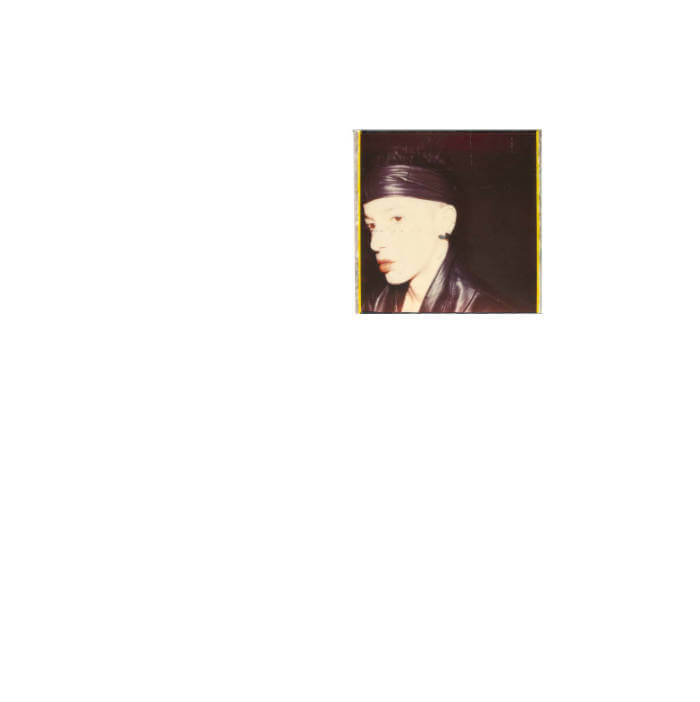
Love, Emily (vinyl LP)
The restored and remastered vinyl reissue of a sound performance by American writer Kathy Acker and French noise/experimental band Nox, published in 1987, with a poster and a previously unpublished set of documents, letters, texts and photos.
Originally released in a long sold-out edition of 50 cassette tapes, Love, Emily (Acte 3) was the third and final album of Michel Henritzi's industrial label AKT Production. Recorded in a Paris studio in 1987, this 25-minute collage of spoken word and noise saturations intersects two radical voices from literature and experimental music of the time: American author Kathy Acker reading excerpts from her book My Death My Life by Pier Paolo Pasolini, and Nox, mainstay of the French noise and industrial scene. Pulled from oblivion, restored and remastered for vinyl by Slow Moves, this archive gem crosses the clashing worlds of poetry and industrial music, melding Acker's thought-provoking words to absolute and inflexible industrial sounds. A lot of it is noise, but a lot of it is also play; research for a new mystique, generating unusual forms and unknown languages.
Published in a limited edition of 400 copies, this vinyl also comes with a long printed panel of previously unpublished photographs and letters from Kathy Acker, tracing the background exchanges that led to the collaboration between the groundbreaking writer, Henritzi and Nox, a poster of Kathy Acker with French translations and a download code featuring both music and extra archival material (interview and articles).
With Kathy Acker (voice), Gerome Nox (percussion, guitars, vocals), Mikhail H (guitars).

Sacred Spells: Collected Works
The collected life-work of an interdisciplinary writer, performer, and central figure in the Black Gay cultural arts and AIDS movements.
In this timely collection of poetry, plays, fiction, and performance texts, Assotto Saint draws upon music and incantation, his Haitian heritage, and a politics of liberation to weaves together a tapestry of literature that celebrates life in the face of death. Influential to contemporary writers such as Essex Hemphill, Marlon Riggs, and Melvin Dixon, Sacred Spells is Saint’s crucial legacy–five hundred incandescent pages of painful, lyric writing that exemplifies the visceral, spiritual dimensions of an artistic practice that’s integral to Black and LGBTQ activist movements worldwide, both historic and present.

Wanting Something Completely Different – 111 Vignettes of Left-Wing Figures, Themes, Films, and Writers
A collection (montage) of biographies and themes written by Jairus Banaji.
Wanting Something Completely Different discusses a range of political figures, themes, directors and writers in a series of brief, evocative descriptions ('vignettes') aimed at laying out a vision of a modern, cosmopolitan left that can think creatively about the world we live in. The political figures include both thinkers and activists from a wide range of backgrounds—from Frantz Fanon and the Palestinian novelist Ghassan Kanafani to the theologian Dietrich Bonhoeffer and the murdered Russian journalist Anna Politkovskaya. The themes range equally widely from the death of Walter Benjamin (reconstructed here from a remarkable documentary on the same theme) and the slaying of Pasolini to the work of British Marxist Perry Anderson, or the corrupt nature of India's leading corporate groups, or the outstanding contributions of Italian and U.S. Black feminists to feminist theory. And under the rubrics which discuss film and literature, there is the same striving for diversity and depth.
The vignettes collected in this Rab-Rab book first circulated on Facebook over some seven years or more and are reproduced here with a new introduction and extensive bibliographical references and notes.
Jairus Banaji is a historian and revolutionary Marxist activist. He received the Isaac and Tamara Deutscher Memorial Prize in 2011. His academic work has ranged widely across sources and languages, with major books on Late Antiquity and commercial capitalism as well as numerous papers and articles.

À perte de mère – Sur les routes atlantiques de l'esclavage
Saidiya Hartman traces the history of the Atlantic slave trade by recounting a journey she took along a slave route in Ghana. Following the trail of captives from the hinterland to the Atlantic coast, she reckons with the blank slate of her own genealogy and vividly dramatizes the effects of slavery on three centuries of African and African American history.
Saidiya Hartman, professor of English and comparative literature at Columbia University, is a scholar of African American literature and cultural history.
Preface by Maboula Soumahoro.
Translated from the English (American) by Maboula Soumahoro (original title: Lose Your Mother. A Journey Along The Atlantic Slave Route, Farrar, Straus and Giroux, 2007).
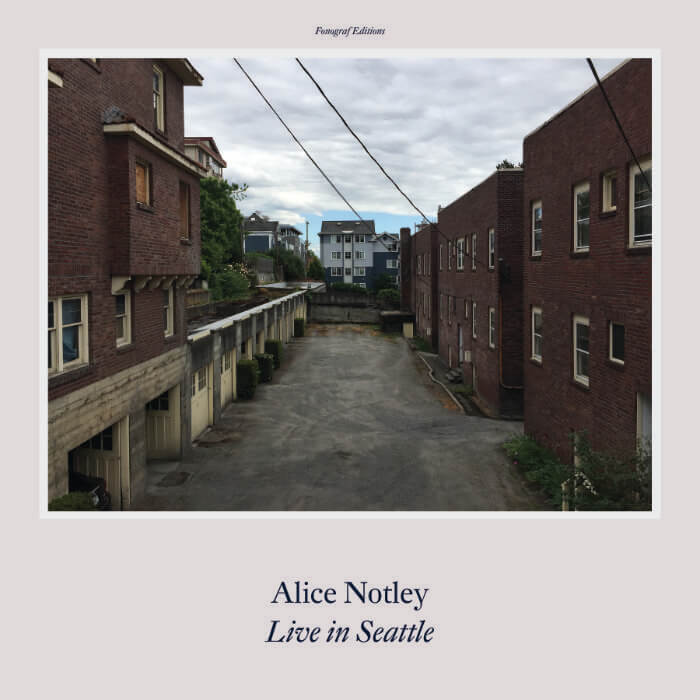
Alice Notley, Live in Seattle
Entirely comprised of poems contained in her latest collection, 2016’s Certain Magical Acts, Live in Seattle elucidates why Alice Notley is one of the world’s most revered poets, the recipient of the Los Angeles TimesBook Award, the Griffin Prize, the Shelley Memorial Award, the Lenore Marshall Prize, and the Poetry Foundation’s Ruth Lilly Prize. “I am alive outside written memory” is how one of the speakers of Notley’s poem “Voices” puts it and listening to the poet read her work live, in front of an entranced audience, serves to detail the intangibility of sound vis-à-vis language.
Live in Seattle also includes excerpts of the onstage conversation Notley had with Seattle poets John Marshall, Christine Deavel and Rebecca Hoogs. Among other topics, the talk revolves around concepts of success, what it means to write a female poetry circa 2017, and the importance of always creating from a position of disobedience.
As part of Seattle Arts & Lectures’ Poetry Series, Live in Seattle was recorded at McCaw Hall in Seattle, Washington on Wednesday, April 5th, 2017 and mastered and engineered by Gus Elg at Sky Onion in Portland, Oregon in the Summer of 2017.
Purchase of Live in Seattle includes a 11×11 insert of Notley’s poem “FOUND WORK (lost lace),” as well as a download card for the entire album. Live in Seattle can also be found digitally on Spotify and Bandcamp. The record itself is not black but clear.

Dies: A Sentence
Dies: A Sentence by Vanessa Place is a 117-page, one-sentence novel about the coils of language and war, unspooled in the dying breath of a pre- and post-scient World War I soldier.
John Witte of the Northwest Review calls Dies, "a marvel of sustained synergy," author Jim Krusoe describes the book as "dizzyingly complex, compound, and full of miraculous side trips as well," and novelist Doug Nufer heralds DIES as a "delightful tour de force of a hopelessly grim predicament." Place obliterates the line between victim and perpetrator, subject and object, rendering this human truth: in the death sentence of life, there is still beauty. "Roll over, dear Whitman," says Susan McCabe in her Introduction, "Here's our new original."
“In a single sentence as bloody and crazed as the history of the 20th century, Place offers up “the untamed cadence of ten thousand feet.” Caught somewhere between Beckett’s The Unnamable, Kathy Acker’s Don Quixote, James Joyce’s Finnegans Wake and Ann Quin’s Passages, Dies is an extravagant and ferocious book, a real and uncompromising marvel.” — Brian Evenson
“The architectonics of Dies calls upon the aural touchstones, not only of Pound, but of Dante, Rabelais (beware of a scatological extravaganza), Eliot, Whitman, Stein, the Bible, Beckett, Joyce, Remarque, even ‘the ghost of mark twain‘—a babbling horde that makes this sentence both humbling and beyond paraphrase, both mythic and contemporary.” — Susan McCabe
Introduction by Susan McCabe.

Our Lady of the Flowers, Echoic
In Our Lady of the Flowers, Echoic, Chris Tysh newly translates Notre-Dame-des-Fleurs, compressing Jean Genet's disturbing 1943 novel into cuttingly charged verse. In the blue hours of the Parisian underworld, pimps, drag queens, and butchers in bloody aprons are joined by Divine, Mignon Dainty-Feet, and the young assassin Our Lady, three saintly figures in a forbidden realm of the senses.
Tysh cuts Our Lady of the Flowers, Echoic into a ghostly song that traces the path from prose to lyric where Divine switches gender and names "as if passing under a scarlet awning." Suturing sexual otherness to an aching of gendered expectations, Tysh's cadences embrace postmodernism's emblematic penchant for all manner of appropriation, and recycling finds a radical iteration in the fashion of fairies, queens, and stool pigeons.
"This volume of verse, played over by a flickering ghostly flame, is perhaps the book that Genet meant to write..."—John Tranter
With an preface by Robert Glück.
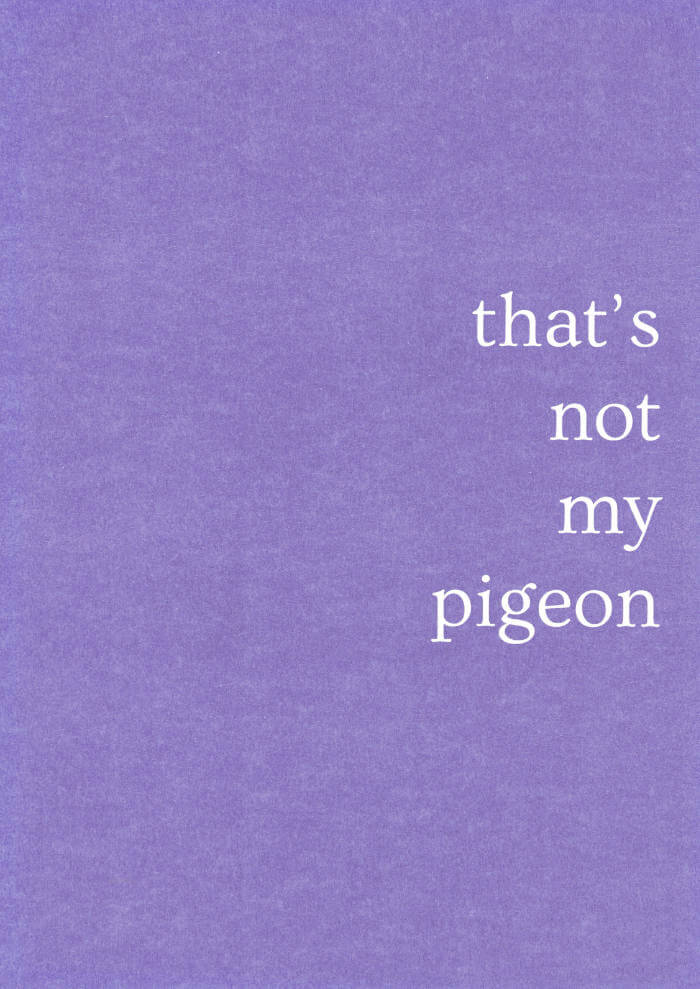
That's not my pigeon
The magazine edition.psd regroups research documents, autobiographical or poetic texts in order to create new narratives around plant and animal life forms. edition.psd de-categorises knowledge: botany, ethnography, history, history of art, philosophy and literature regularly intertwine throughout its pages. edition.psd attempts to develop the ethics of perception of particular situations, of moments, of what is going on.
The fourth issue focuses on pigeons and the imagnaries surrounding them, it is a collaboration with the artist and researcher Anastasia Simonin.
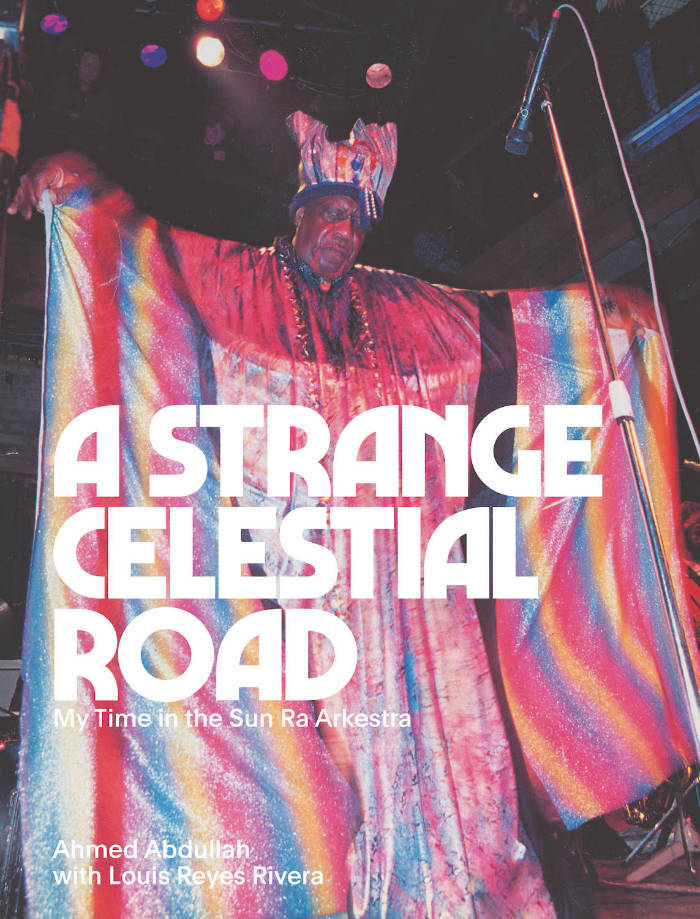
A Strange Celestial Road – My Time in the Sun Ra Arkestra
Louis Reyes Rivera, Ahmed Abdullah
In this memoir, Harlem-born trumpeter Ahmed Abdullah recounts decades of national and international touring with the Sun Ra Arkestra and charts the rise of New York loft jazz scene, offering a fascinating portrait of advanced music in Brooklyn and lower Manhattan from the 1970s through the 1990s.
In this captivating memoir, the first full-length account of life in the Arkestra by any of its members, Harlem-born trumpeter Ahmed Abdullah recounts two decades of traveling the spaceways with the inimitable composer, pianist, and big-band leader Sun Ra. Gigging everywhere from the legendary Bed-Stuy venue the East to the National Stadium in Lagos, Abdullah paints a vivid picture of the rise of loft jazz and the influence of Pan-Africanism on creative music, while capturing radical artistic and political developments across Brooklyn and Lower Manhattan in the 1970s and '80s. Richly illustrated with seventy-two pages of photographs and posters from Adger Cowans, Marilyn Nance, Val Wilmer, and others, A Strange Celestial Road interweaves the author's own moving story—his battles with addiction, spiritual development, and life as a working class performer—with enthralling tales of tutelage under Cal Massey, collaborations with the likes of Ed Blackwell, Marion Brown, and Andrew Cyrille, and profound, occasionally confounding, mentorship by Sun Ra. Originally written in the 1990s with the help of Nuyorican poet Louis Reyes Rivera and published now for the first time, with a foreword by Salim Washington, A Strange Celestial Road isnot only an autobiography, but a history of a remarkable and under-documented movement in music.
Ahmed Abdullah (Leroy Bland) joined the Sun Ra Arkestra as a trumpeter in 1974 and remained a member for more than twenty years. Born in Harlem in 1947, he became an important figure in the New York loft jazz movement, forming the group Abdullah in 1972, and going on to found the Melodic Art-Tet with Charles Brackeen, Ronnie Boykins, and Roger Blank in the early 1970s and The Group with Marion Brown, Billy Bang, Sirone, Fred Hopkins and Andrew Cyrille in 1986. Abdullah is a co-founder of the Central Brooklyn Jazz Consortium, has been the music director of Dianne McIntyre's Sounds in Motion Dance Company, and is music director at the historic venue Sistas' Place in Bedford-Stuyvesant, Brooklyn. He has been a music instructor at Carnegie Hall and Brooklyn Philharmonic Orchestra, and teaches at the New School for Social Research in Manhattan and an elementary school in central Brooklyn.
Louis Reyes Rivera (1945-2012) was a Puerto Rican poet from Brooklyn. Known as the "Dean of Nuyorican Poetics," he led creative writing workshops in community centers and prisons across New York, lectured on Latin and Black diasporic history and literature at New York colleges including Hunter, Boricua, Pratt, and Stony Brook; and was a leader in the 1969 student movement at CUNY, leading to the founding of its department of ethnic studies. Rivera was also a prolific editor, working on books such as John Oliver Killens's Great Black Russian: The Life and Times of Alexander Pushkin, and a translator of works by Puerto Rican poets Clemente Soto Velez and Otto Rene Castillo. His own poetry collections include Who Pays the Cost (1977), This One for You (1983), and Scattered Scripture (1996), which received an award from the Latin American Writers Institute.
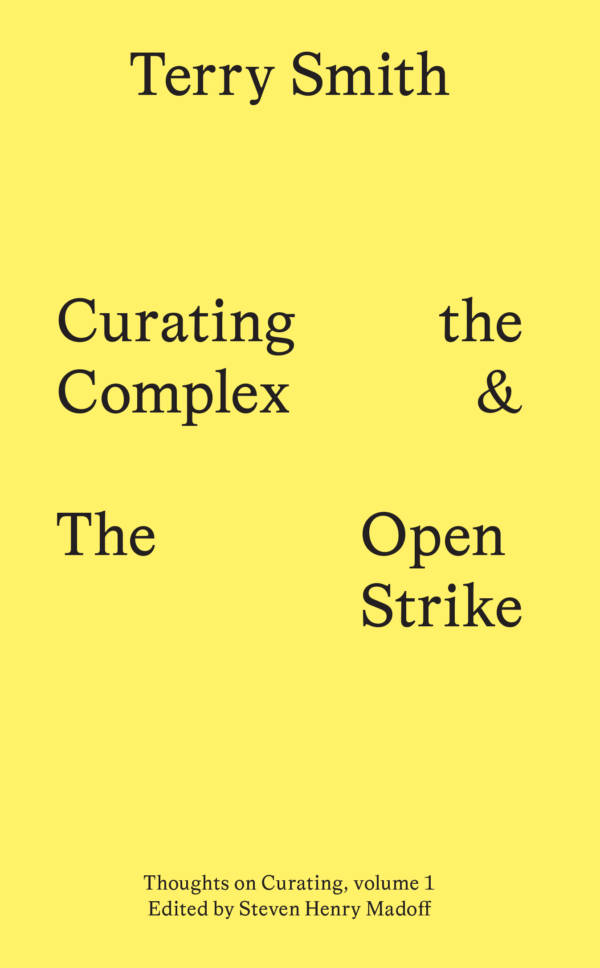
Curating the Complex & The Open Strike
A visionary analysis of what Terry Smith identifies as the "visual arts exhibitionary complex."
In this book, the renowned art historian and writer maps the institutional and quasi-institutional framework for contemporary art that sprawls across the globe. He then delves into a powerful form of curatorial activism rising up in the exhibitionary complex: Open Strike. This is the inaugural volume of the series Thoughts on Curating, edited by Steven Henry Madoff.
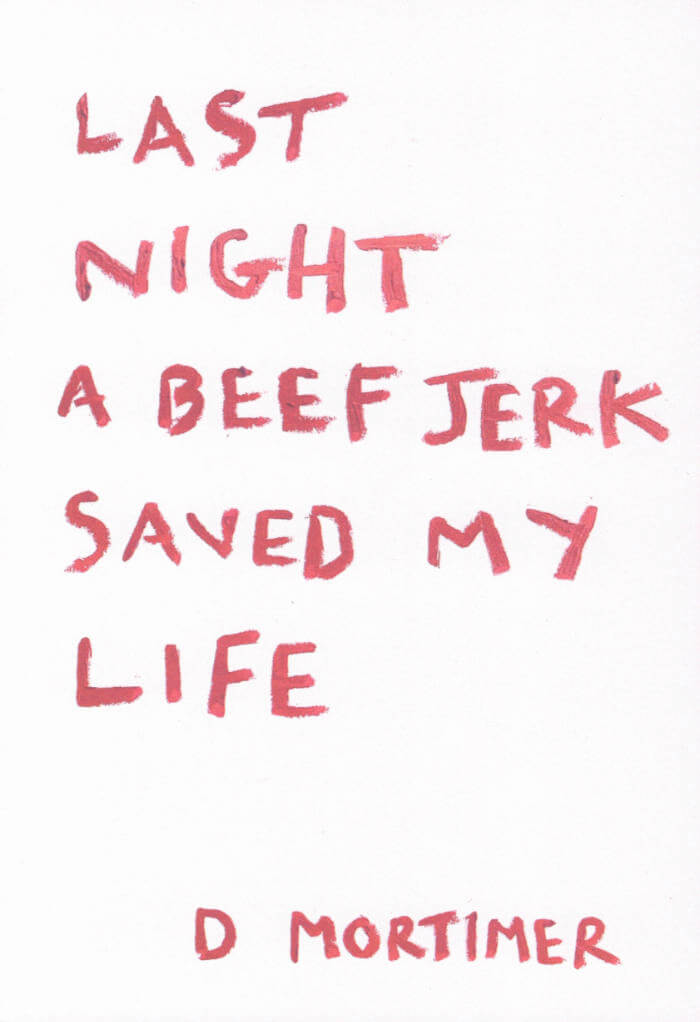
Last Night A Beef Jerk Saved My Life
'Mortimer is one of the most talented writers of our generation and their debut collection proves this. Part essay, part poem, part memoir and part SOS, Last Night a Beef Jerk Saved My Life navigates its thematic scope—ranging from transness, queerness and naming to loving and losing—with sensitivity, insight, humour and bravado. Best thing I read this year.' - Isabel Waidner
'Last Night a Beef Jerk Saved My Life is a wonderful and thoughtful reflection on love and beauty and bodies and music and memories, and on the constellations of small things that make up modern queer life.' - Huw Lemmey
D Mortimer is a writer from London focussed on trans crip narratives. Their work (essays, poetry, prose, creative-criticism) has appeared in Granta and been performed at the Institute of Contemporary Art in London (Queers Read This, The Kathy Acker Reading Group). Their short story ‘Supermarket Revelations’ was published in Liberating the Canon: An Anthology of Innovative Fiction (ed. Waidner, Dostoyevsky Wannabe: 2018) and a poem-essay, 'How To Draw Hands', was published by Warm Yourself by My Trash Fire in 2020.